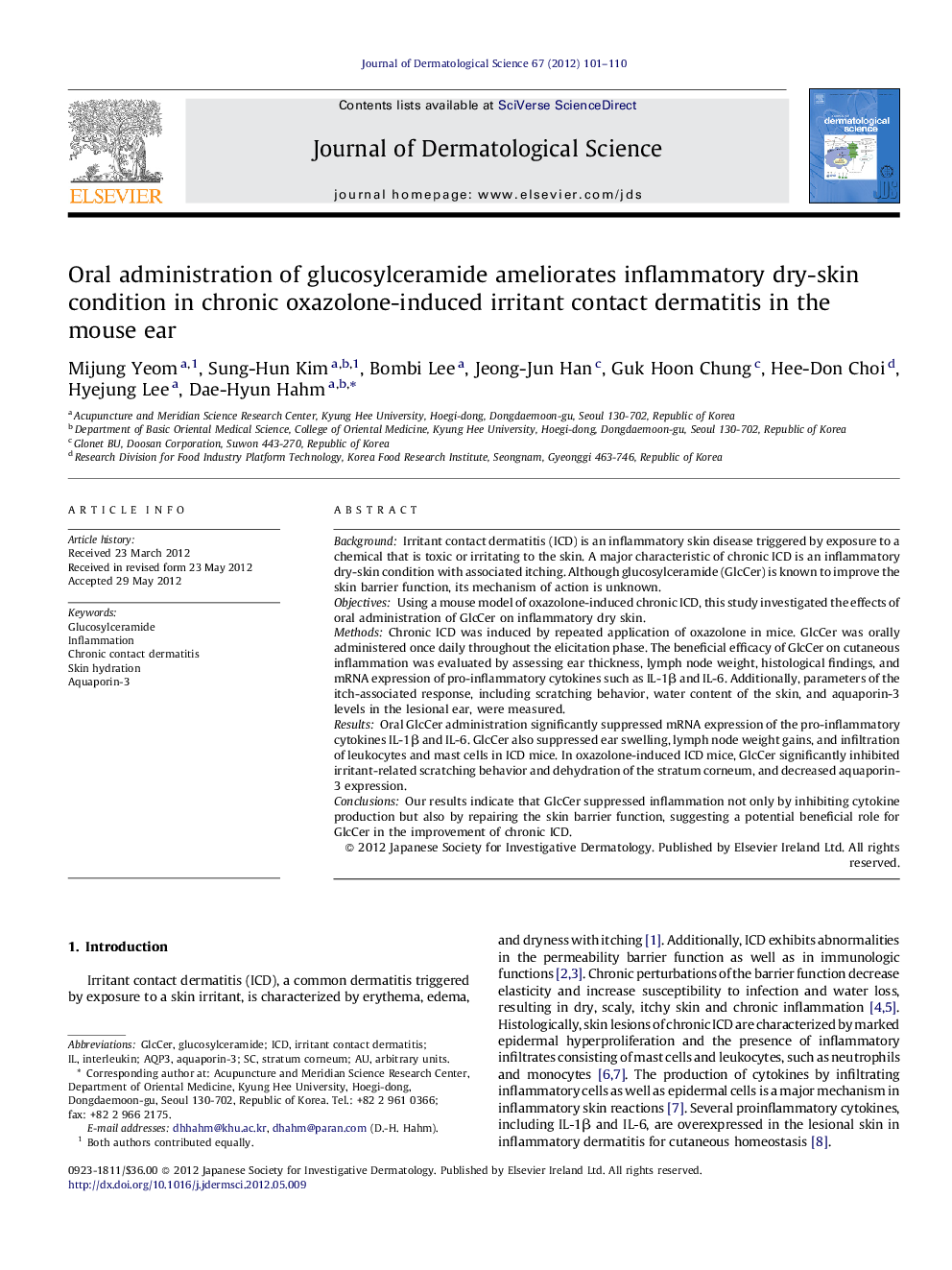| Article ID | Journal | Published Year | Pages | File Type |
|---|---|---|---|---|
| 3213308 | Journal of Dermatological Science | 2012 | 10 Pages |
BackgroundIrritant contact dermatitis (ICD) is an inflammatory skin disease triggered by exposure to a chemical that is toxic or irritating to the skin. A major characteristic of chronic ICD is an inflammatory dry-skin condition with associated itching. Although glucosylceramide (GlcCer) is known to improve the skin barrier function, its mechanism of action is unknown.ObjectivesUsing a mouse model of oxazolone-induced chronic ICD, this study investigated the effects of oral administration of GlcCer on inflammatory dry skin.MethodsChronic ICD was induced by repeated application of oxazolone in mice. GlcCer was orally administered once daily throughout the elicitation phase. The beneficial efficacy of GlcCer on cutaneous inflammation was evaluated by assessing ear thickness, lymph node weight, histological findings, and mRNA expression of pro-inflammatory cytokines such as IL-1β and IL-6. Additionally, parameters of the itch-associated response, including scratching behavior, water content of the skin, and aquaporin-3 levels in the lesional ear, were measured.ResultsOral GlcCer administration significantly suppressed mRNA expression of the pro-inflammatory cytokines IL-1β and IL-6. GlcCer also suppressed ear swelling, lymph node weight gains, and infiltration of leukocytes and mast cells in ICD mice. In oxazolone-induced ICD mice, GlcCer significantly inhibited irritant-related scratching behavior and dehydration of the stratum corneum, and decreased aquaporin-3 expression.ConclusionsOur results indicate that GlcCer suppressed inflammation not only by inhibiting cytokine production but also by repairing the skin barrier function, suggesting a potential beneficial role for GlcCer in the improvement of chronic ICD.
